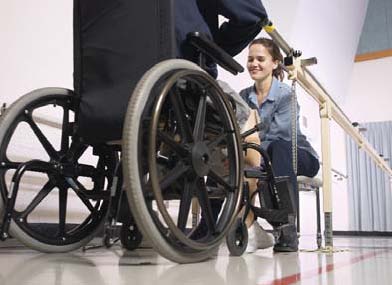
If your surgeon has suggested “resurfacing” your hip, he or she probably believes you are a good candidate for a newer procedure that has gained popularity in the past few years: hip resurfacing arthroplasty. Unlike a traditional hip replacement, where the entire head of the femur (the long bone in your thigh that fits into the socket) is removed, this surgery involves only shaving the head of the femur to a rounded shape and covering it with a metal cap. The appropriate candidates are typically women in their 40s and 50s, and healthy men under the age of 60.
Many surgeons prefer resurfacing over a complete hip replacement because removing less bone allows for a second hip replacement in the future, if necessary. However, this type of surgery is no easier on the patient than traditional hip replacement—in fact, a larger incision is needed to perform the procedure—and the recovery can still take up to 6 months or longer.
For ultimate success, it is important that you work with us and commit to the rehabilitation program designed for this type of surgery. Keep the following points in mind:
- The reason for resurfacing your hip with an artificial implant is to get you moving again with less pain and better freedom of movement; your rehabilitation will focus on the same things.
- The goal of physical therapy will be to strengthen the thigh and hip muscles, improve balance, and manipulate ankles and knees to avoid swelling and blood clots.
- Directly after surgery, you will have to follow strict “hip precautions” since you will be at greater risk for dislocation. We will teach you specific ways to perform seemingly simple tasks, such as climbing stairs and getting in and out of bed or your car.
- Once your soft tissues have gained adequate strength, you will be able to incorporate more varied therapeutic exercises.
While recovery can be extensive, by following our suggestions and committing to the rehabilitation process, you will achieve the best—and fastest—results from hip resurfacing.


















